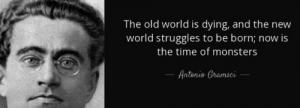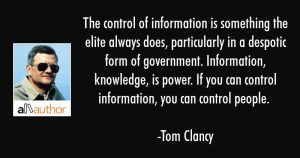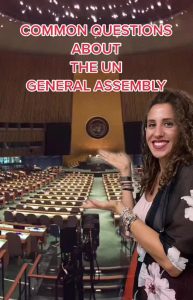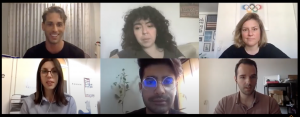In this final academic post, I will elaborate on my previous entries, including comments and feedback received from fellow coffee and data lovers to reflect on this interesting blog experience.
Touching upon data and ICT, this post will be focusing on the relationship we have with technology. While doing so, I will incorporate the discussion into a more academic discourse around development. Taking into account that technology mirrors the society that creates it (O’Donnell & Sweetman, 2018), I will shine a light upon the nature of online inequalities.
The breakup letter
In “We need to talk: a breakup story” I share my personal experience with technology in the last 20 years of my life or, to put it in other words, since my very first contact with the digital world.
At that time, Internet and the World Wide Web were moving their baby steps in our lives and just like some of our blog readers I can consider myself lucky to have benefitted from a nearly tech-free childhood. Back then, Internet was a nearly empty playground in comparison to what it is now, and creativity, freedom and exploration made it magical.
Somewhere along the way we lost that magic, and instead of feeling free we now feel controlled and influenced, if not even manipulated by new technologies. This issue seems to be rooted in digital communication.

Rettberg (2014) argues how participatory media like blogs and social media can be seen as a double-edge sword. As much as they can be used to liberate people, they can also oppress them. People not included in dominant groups, the so-called “subalterns” according to Spivak (1988), can construct themselves as a subject in a digitalized world and find their own voice. But if participatory media have this liberatory potential allowing the oppressed to rise in their fight for freedom, it is also true that they allow for an increase in control and surveillance (Ruttberg, 2014).
I will get back to the topic of this controlling technology later, making use of the comments received in the Round Table Discussion when talking about the relationship we have with our smartphones. For now, let’s focus on why Internet has turned from that healthy democratic playground to a dystopian science fiction world.
Is Internet a democratic tool?
We can argue how Internet creates unlimited opportunities and can be interpreted as a tool for progress and advancement. Who benefits from it, though? Noble argues that:
“[d]espite the widespread beliefs in the Internet as a democratic space where people have the power to dynamically participate as equals, the Internet is in fact organized to the benefit of powerful elites. (2018:49)”
 Since Internet is an inexhaustible source of information, whoever controls that flux of information eventually wields power.
Since Internet is an inexhaustible source of information, whoever controls that flux of information eventually wields power.
In a capitalistic economy where market forces dominate, big companies and corporations can get control over data, manipulate outcomes, and impose their will power to further increase their status. Hence, as Noble asserts (2018), data is biased and perpetuates oppression toward marginalised groups in favour of commercial profit, generating social inequalities.
In the breakup letter I expressed my resentment in the shifting from subject to object as an internet user. While in the past the choices of the contents I would get access to lay with me, now the feeling has reversed, and I have become a target of what the web wants me to be exposed to.
Algorithms are loaded with power and digital technologies are implicated in power relations, being these on the matter of race, gender, sexuality, economy, politic and so on.
Considering how “[…] technology mirrors realities in society, with the power to exacerbate or enhance” (O’Donnell & Sweetman, 2018), we can argue that the problem lies not with technology per se, but with the society that creates that technology. It is evident how, particularly in the last decade, technology has undergone a process of alignment with the capitalistic society we live in, exploiting its neoliberal values.
Coffee break
Before entering a deeper discussion about communication and technology though, I think we could all do with a coffee break.
- What is the finest coffee you ever tried?
- Do you know what is the most expensive coffee in the world?

The answer to the second question is kopi luwac, which can be sold for as much as $100 per cup. What’s curious about this coffee is that is made from the excrements of wild palm civets, cat-like creatures that can be found in South-East Asia and sub-Saharan Africa.
Once eaten by the civet, the coffee beans undergo a transformation process thanks to the mammal’s digestive enzymes. These enzymes change the structure of proteins in the beans resulting into a much smoother coffee (Bale, 2016).
With globalization, the demand of kopi luwac has noticeably increased generating an illegal civet trade. These nocturnal solitary animals are poached, kept in captivity in small cages and forced-fed a strict coffee-cherry diet.
The civets are often kept in awful conditions, with a high mortality rate and a real conservation risk for some species. On top of their exploitation for coffee purposes, they are also employed in civet-ogling tours in many tourist places as a money-making attraction (Wildlifealliance, 2018).
Towards a sustainable kopi luwac
Antony Wild, author of “Coffee: A Dark History” and responsible of bringing kopi luwac to the Western World is now strongly opposing its practice. Shocked after learning about the tragic consequences kopi luwac has brought with its industrialization, Wild is legally fighting against it (La Canna, 2015).

After launching the Facebook campaign “Kopi Luwac: Cut the Crap!” to raise awareness about the animal cruelty behind the production of the coffee, Wild has partnered with World Animal Protection (WAP) and change.org. Together, not only they succeeded in convincing many retailers in Western countries to stop stocking caged kopi luwac, but they also found a foundation producing genuine wild kopi luwac in a fully sustainable way (TheGuardian, 2014).
Empowered by the great results obtained with the Facebook initiative, Wild reached the Indonesian Government, which is now supporting a certification scheme for the protection of what’s considered a “national treasure”.
Online communication and the UNGA dance
In “Online communication: the UNGA dance” I link to my first post discussing the fast-changing nature of technologies and how online communication has changed over the years.
Summoning the words of Thomas Hylland Eriksen (2021) who reminds us that in the modern world online communication is just as significant as in-person communication, I then concentrate on how we communicate online.
Talking about social media communication in particular, Dante Licona (2021) advocates for 3 key factors considered essential in any good social media communication strategy. Presence, consistency and shareability is what the International Federation of Red Cross (IFRC) bases its online communication on to reach its audience.
The global head of digital engagement at Amnesty International, Valeriia Voshchevska (2021), argues how each platform has its own audience, and our communication shall always consider the audience and be adapted to its characteristics and needs.
Whereas some audiences require a more traditional line of communication, others are more apt to experimentation and an element of creativity and humour can help make the connection possible. However, it is also true that communicators need to strike a balance between maintaining corporate identity and engaging with new audiences.
The experiment
To explore the complexity of online communication I introduce the UNGA dance, a United Nations’ campaign on TikTok. The dance makes use of the “Question I Got Asked” trendy TikTok’s feature to explain the main functions of the General Assembly.
Without revealing the outcomes of the campaign, I simply present it as it is, waiting for the comments of our readers.

Here, it’s where the experiment becomes exciting. Leaving a blank page for the readers to join in the conversation and share their own opinions about the topic gave me a chance to re-approach the subject with an open mind. This way, in the follow-up post “Online communication: the UNGA (II)”, I could reflect on the initiative from a different perspective. Welcoming comments and making use of them in the writing of the post enhanced the quality of the contents and helped me learn something new.
In reporting the ‘not so well-received’ comments to the UNGA dance, I linger on the top one: “stop making tik tok and save the world”. With thousands of likes I debate how this comment reinforces old misconceptions about the role of the UN.
In respect to any given society’s development, practitioners like Fraser and Restrepo-Estrada argue how this:
“[…] should originate from that society’s values and its perceptions of its own future. It should be as self-reliant as possible, in that each society should draw on its own resources and strengths to the maximum practical extent before using external resources (1998).”
Furthermore, the development sector itself recognizes the importance of adopting a more participatory approach at the expenses of the outdated dependency paradigm (McAnany, 2012).
Analysing another similar initiative, the #jerusalemachallenge” brought in by Lauren in the comment section, we continue interrogating online communication and how development agencies approach this topic.
Sick technology or sick society?
We can argue that there is a threatening feature of obsession embedded in online communication and social media. Everybody wants to be there, rate first, reach everyone. When this idea becomes the only thing that matters, we witness dubious results.
However, social media do not reinforce nor counter inequalities, they align to the offline sphere reflecting its features and connotation (Miller et all, 2016). Once again, we can observe how this element of obsession is simply passed on to the online sphere by the offline neoliberal society currently dominating the modern world.
Smartphones: the ultimate cyber espionage weapon
In the “Round Table Discussion“, I present an experiment conducted by an Italian TV show to introduce a much more complex issue around datafication. The experiment shows how smartphones can secretly record private information we never meant sharing, and use it to promote related goods and services through ads.

I then invite my fellow bloggers to reflect over this matter with some thought-provoking questions such as:
- Is it us using smartphones, or are smartphones and the system behind it taking advantage of us?
- Is technology serving people, helping people and societies develop, or is it reinforcing a capitalistic system where human beings are reduced to nothing but numbers?
- It seems there is a dichotomy here between technology and humanity. Is the future bright for humanity? Or can we make sure we align, and go side by side in the same direction?
The feedback
The answers are interesting and varied:
Hamzah admitted he is somehow controlled by his phone, for many of his product choices are strongly dictated by what the smartphone exposes him to. He believes we are becoming no longer human, as we are controlled by these big companies that can easily influence us and to which we are just numbers.
Michela believes those are very provocative questions that have the purpose of making us reflect on what direction technology is headed towards. It seems to lead us to what resembles a science fiction world and it’s crucial for us to be informed so we can make wiser choices.
Clara, conversely, doesn’t believe that we are just a number, controlled by technology. We do have a responsibility, though. The moment we say that technology is taking over we probably allow it to take over. It’s our duty to prevent this from happening.
Lastly, Talia, shares an obsessive experience with her Fitbit to raise further questions on technology. How far are we willing to let technology control us? Currently we can still opt out, but one day we will no longer be able to.

The co-construction model
Despite the great potential technologies offer, we notice that people are becoming more and more sceptical about them. In my first post I asked our readers whether they would consider themselves techno-optimists or techno-pessimists and we can hereby observe a similar pattern with the answers received.
Rettberg (2014) argues that the idea of a technological determinism where technology determines social and cultural trend has often been criticized. Instead, a co-construction viewpoint has prevailed, where it’s believed that there are mutual dependencies between technologies and culture.
Given that ICT is not neutral, and that people hold many diverse meanings and uses for ICT regardless of their intended purpose, a big challenge is to empower people to develop a critical consciousness of ICT (Bentley et al, 2019).
Answering to my own question, I believe there is still time to close the gap between technology and humanity and find a way to peacefully coexist and progress together. However, the time to act is now.
Reflections
This project gave me the opportunity to reflect on a double loop (Eyben, 2014) on some of the topics I am particularly keen on while engaging in conversation with some like-minded people.
From the interaction and the debate on developing matters, to the reading of other blogs and the engagement with them, this exercise has benefitted me greatly. I believe there is much more to learn from an open discussion than from the writing of your own personal assignment, and the blog allows for this interchange to take place.
I enjoyed peeking at the other blogs just as well as working at my own and I soon realised that the more I commented other blog posts, the more people would come by to read my posts, and eventually leave a comment too (quite like the #follow4follow trend on Instagram).
Besides, changing the tone of my writing to a more colloquial one where jokes and side topics could find their place into bigger and more earnest issues was a delight. I also noticed how people find it easier to engage in conversation when a light-hearted element is present in the discussion.
According to Evan Williams, co-founder of Blogger.com, frequency, brevity and personality are the 3 main characteristics of a blog (Turnball, in Rettberg, 2014).
I tried to follow these guidelines while making my posts as authentic as possible and I have reasons to believe it paid off the effort.
References:
Bale, R. (2016, April 29): The Disturbing Secret Behind the World’s Most Expensive Coffee. Retrieved from National Geographic https://www.nationalgeographic.com/animals/article/160429-kopi-luwak-captive-civet-coffee-Indonesia
Bentley, C.M., Nemer, D. & Vannini, S. (2019). When words become unclear”: unmasking ICT through visual methodologies in participatory ICT4D AI & Society, 34, 477–493.
Eriksen, T. H. (2021, September 15). PANDEMOCRACY: Conviviality and everyday politics in times of crisis. Malmö University.
Eyben, R. (2014). International Aid and the Making of a Better World: Reflexive Practice. Oxon: Routledge.
Fraser, C., and Restrepo-Estrada, S. (1998). Communicating for Development: Human Change for Survival. London and New York: I. B. Tauris.
La Canna, X. (2015, April 12) Civet cat coffee: A delicious beverage or a case of animal cruelty? Retrieved from abc.net.au https://www.abc.net.au/news/2015-04-12/cruelty-claims-and-civet-cat-coffee-luwak-from-bali/6386544
McAnany, Emile G. (2012). Saving the World: A Brief History of Communication for Development and Social Change. Champaign, IL: University of Illinois Press.
Miller, D., Costa, E. & Haynes, N. et al. (2016) How the world changed social media. London: UCL Press.
Noble, S.A. (2018). Algorithms of Oppression: How Search Engines Reinforce Racism. New York, NY: NYU Press.
O’Donnell, A. & Sweetman, C. (2018) Introduction: Gender, development and ICTs in Gender & Development, 26:2, 217-229.
Rettberg, J. W. (2014). Blogging. Oxford: Polity.
Spivak, G. C. (1988). Can the Subaltern Speak? In Nelson, Cary and Grossberg, Lawrence (eds.) Marxism and the Interpretation of Culture, pp. 271-313. London: Macmillan.
TheGuardian (2014, Sep 19) Civet cat coffee: can world’s most expensive brew be made sustainably? Retrieved from theguardian.com https://www.theguardian.com/sustainable-business/2014/sep/19/civet-cat-coffee-worlds-most-expensive-brew-made-sustainably-kopi-luwak
Wildlifealliance (2018, September 4) Kopi Luwak civet coffee: The real cost. Retrieved from: wildlifealliance.org https://www.wildlifealliance.org/cost-kopi-luwak-coffee/


